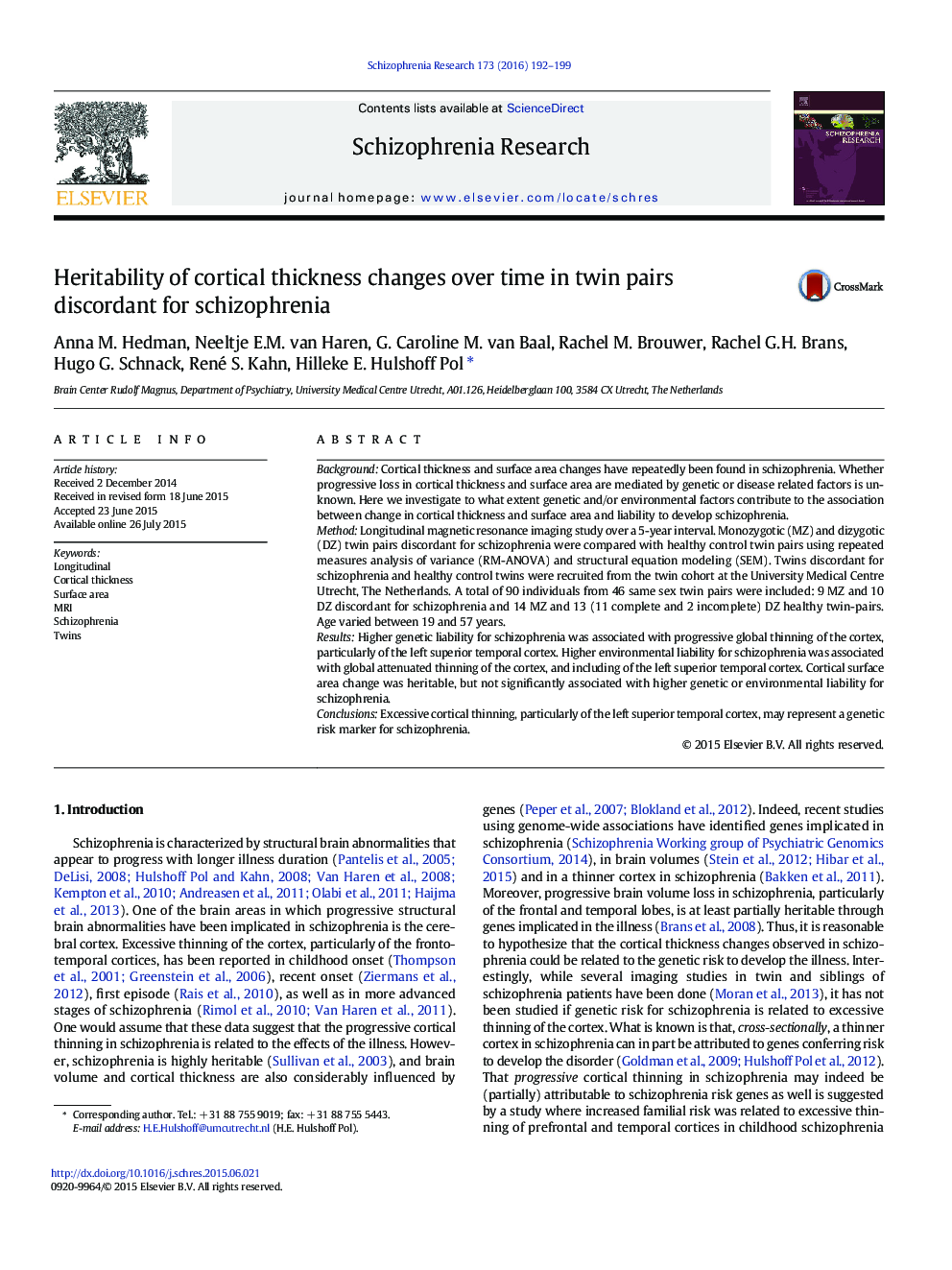| Article ID | Journal | Published Year | Pages | File Type |
|---|---|---|---|---|
| 338940 | Schizophrenia Research | 2016 | 8 Pages |
BackgroundCortical thickness and surface area changes have repeatedly been found in schizophrenia. Whether progressive loss in cortical thickness and surface area are mediated by genetic or disease related factors is unknown. Here we investigate to what extent genetic and/or environmental factors contribute to the association between change in cortical thickness and surface area and liability to develop schizophrenia.MethodLongitudinal magnetic resonance imaging study over a 5-year interval. Monozygotic (MZ) and dizygotic (DZ) twin pairs discordant for schizophrenia were compared with healthy control twin pairs using repeated measures analysis of variance (RM-ANOVA) and structural equation modeling (SEM). Twins discordant for schizophrenia and healthy control twins were recruited from the twin cohort at the University Medical Centre Utrecht, The Netherlands. A total of 90 individuals from 46 same sex twin pairs were included: 9 MZ and 10 DZ discordant for schizophrenia and 14 MZ and 13 (11 complete and 2 incomplete) DZ healthy twin-pairs. Age varied between 19 and 57 years.ResultsHigher genetic liability for schizophrenia was associated with progressive global thinning of the cortex, particularly of the left superior temporal cortex. Higher environmental liability for schizophrenia was associated with global attenuated thinning of the cortex, and including of the left superior temporal cortex. Cortical surface area change was heritable, but not significantly associated with higher genetic or environmental liability for schizophrenia.ConclusionsExcessive cortical thinning, particularly of the left superior temporal cortex, may represent a genetic risk marker for schizophrenia.
